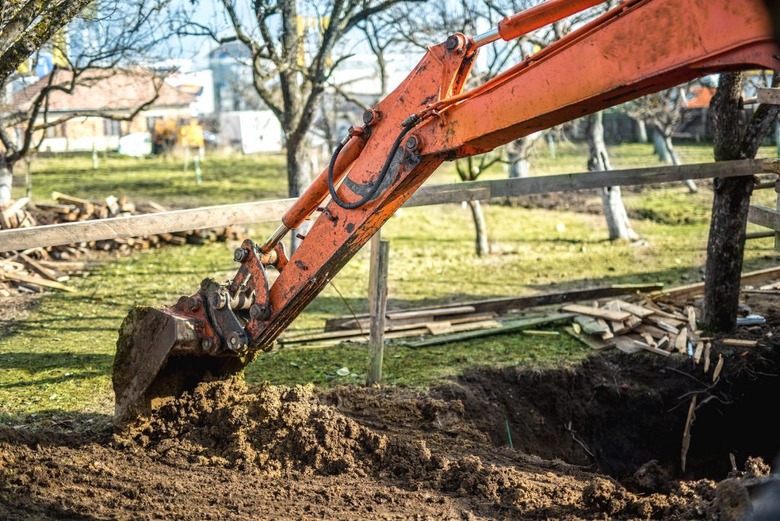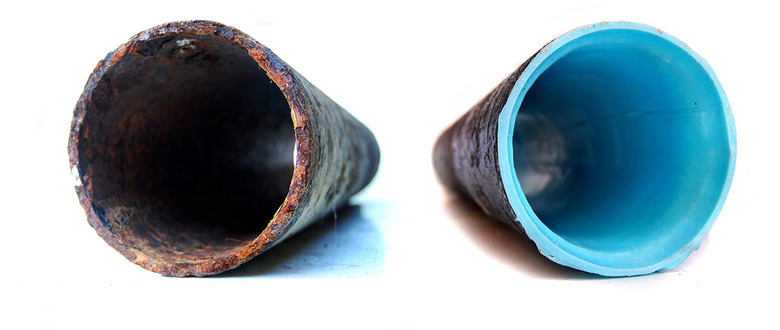How Much Does It Cost To Have A Sewer Line Replaced?
Replacing a sewer line is one of those repairs that many homeowners don't realize is their responsibility. No utlity company or citywork department will make repairs or replacements of sewer lines running from the house to the city sewer line—it's up to you. It's also one of these projects whose price tag can grow quickly depending on the conditions.
All of the drains in a house connect to one sewer line, sometimes called a sewer lateral, that runs underground from the house out to the street where it connects to the municipal sewer line. The homeowner is responsible for everything up to the municipal sewer line, in some places up to the property line. Unfortunately, most homeowner's insurance policies do not cover outside sewer line repairs.
Sewer Line Problems
Sewer Line Problems
Although most newer homes have plastic (PVC) sewer lines, older homes were plumbed with a variety of waste line materials, including clay, cast iron and bitumen-coated fiber pipe known as Orangeburg. Over time, the ground can settle, crushing or damaging the pipes; joints corrode and separate; tree roots find small openings in the pipe and force their way in, enlarging the openings. These forces of nature cause leaks in the sewer line that could leak into the surrounding ground or force the sewage to back up into the house.
Removing Temporary Blockages: $200 to $450 per project.
Not all blocked sewer lines require extensive repair. A blockage caused by tree roots or some other obstruction can often be removed by a plumber using a power sewer snake. These industrial-type snakes can be rented to make the pipe cleaning a DIY project. But snaking any drain is unpleasant, and an experienced plumber can make sure the job is done right.
Major Sewer Line Repairs
Major Sewer Line Repairs
Sometimes a major repair or total replacement is unavoidable. Signs of a sewer line problem may include:
- The main sewer line clogs frequently.
- You hear a gurgling sound when you flush the toilet.
- Wet areas of the lawn appear when it has not rained or snowed.
The best way to diagnose a problem is by using a video camera. A contractor will run the camera through the sewer line, relaying the images back to a monitor. The images may help pinpoint the problem and help determine the extent of the repair. Sewer repair contractors offer this service for about $300 to $500. If the contractor does the repair work, he may give you a discount on the camera session.
There are three types of sewer line repair. The estimates for the three overlap somewhat, but it is important to remember that the costs are for the sewer line work only. They do not reflect the secondary costs of repairing lawns, gardens and hardscapes disturbed by the work.
Trench and Replace: About $100 to $400 per foot.
This is the original sewer line repair technique. The contractor will dig a trench to expose the pipe, replace it with PVC pipe and then fill in the trench. This could be the least expensive or the most expensive option, depending on the conditions. Digging up a length of lawn will leave an ugly gash for a time, but the grass will grow back at relatively modest cost. But if the pipe runs under a patio, driveway or large trees whose roots or even the whole tree has to be removed, the project's costs will grow. Breaking through the basement floor or slab could add as much as $200 per foot to the cost of the project.
Pipe Bursting: About $75 to $250 per foot.
Rather than digging a long trench to expose the entire pipe, this technique requires two holes: an access hole and an exit hole. The contractor will pull a new pipe through the old pipe, breaking it up and pushing it out of the way. This method is not allowed in some places, because the act of breaking up the existing pipe and moving it may damage nearby utilities, such as water or gas lines.
Pipe Liners: About $75 to $300 per foot.
This technique, called cured-in-place piping (CIPP), creates a pipe within the old pipe and requires two holes rather than a long trench. The process begins by removing tree roots or other obstructions that have penetrated the original pipe. The plumber then pulls a flexible liner that has been coated with resin through the pipe. He then pulls an inflated bladder through the liner. He inflates the bladder which pushes the liner against the walls of the old pipe. Once the resin cures in a few hours, he will remove the bladder. The result is a sewer pipe with a hard plastic-like lining.


